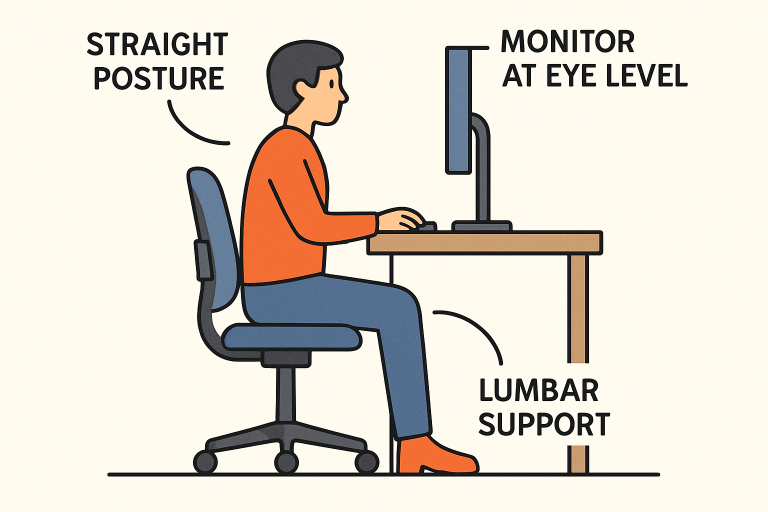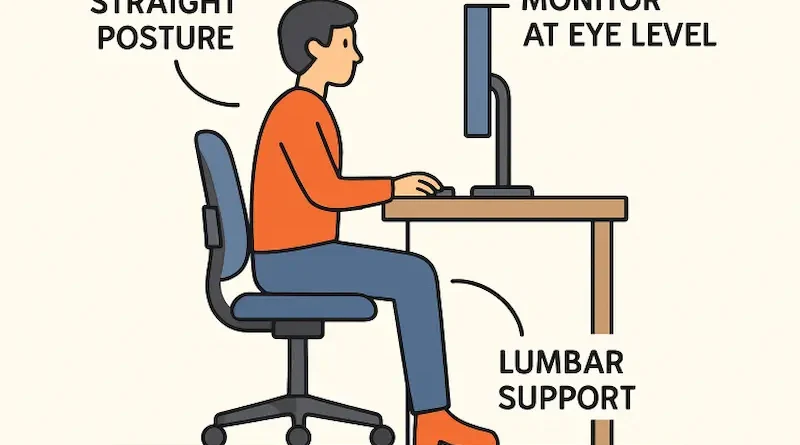Protecting Your Spine: Safe Practices for Preventing Neck and Back Injuries at Work
Safeguarding your spinal health is vital for comfort, productivity, and long-term well-being. Workplace activities like sitting or lifting pose injury risks. Using ergonomic strategies and prevention can reduce damage or pain. No matter your job, understanding hazards and applying solutions help care for your spine. Preventive efforts protect health and promote a positive, productive workplace.
Understanding the Risks
Work-related musculoskeletal disorders (WMSDs) are among the most frequent causes of workplace absenteeism and long-term injuries. Repetitive strain from desk jobs, frequent lifting, and poor posture can result in persistent neck and back pain, nerve damage, and impaired mobility. Many workers underestimate the cumulative impact of these factors until symptoms interfere with their daily lives, such as in cases of a back injury at work in Richmond. Education on safe practices is the first step in prevention. According to the Centers for Disease Control and Prevention (CDC), the early identification and correction of ergonomic hazards significantly reduces the likelihood of long-term injuries and disabilities in the workplace.
Ergonomic Workstation Setup
An ergonomically optimized workspace is crucial in minimizing spinal stress. Some key components include:
- Chair Selection: Choose chairs with lumbar support and adjustable height to help sustain the spine’s natural curve.
- Monitor Placement: Position screens at eye level—this prevents neck craning and upper back strain.
- Keyboard and Mouse Setup: Keep these devices within easy reach to avoid awkward wrist and shoulder positioning.
Consider consulting the Occupational Safety and Health Administration (OSHA) guidelines when setting up or evaluating your workspace for additional ergonomic recommendations.

Proper Lifting Techniques
Lifting heavy objects with improper form can lead to significant spinal injuries in the workplace. To mitigate this risk, individuals should bend at their knees while keeping their back straight, hold the load close to their body to reduce leverage on the spine, and pivot with their feet instead of twisting their spine. Additionally, workers should seek assistance or use mechanical aids for handling unusually heavy or awkward items. Employers can further enhance safety by offering continuous training sessions and providing clear visual aids that demonstrate proper lifting techniques in the workplace.
Regular Breaks and Movement
Extended periods of stationary positions, particularly sitting, can result in spinal compression, muscle tightness, and subsequent pain. To mitigate these issues, it is recommended to break long sitting sessions by setting a timer to stand, stretch, or walk every 30 to 60 minutes. Additionally, incorporating gentle stretches, torso twists, and leg extensions at the desk can alleviate muscle tension. It is also beneficial to walk during calls or meetings whenever possible, such as opting for walking meetings or standing during phone calls. These small, consistent habits can lead to substantial improvements in spinal health over time, especially for individuals in prolonged sedentary jobs.
Strengthening Core Muscles
Core muscles stabilize the spine, vital for overall function. Building core strength absorbs shocks, manages workload, and prevents injury-causing movement patterns. Exercises like planks, glute bridges, bicycle crunches, and leg raises enhance stability by targeting different muscles, starting with few repetitions and increasing gradually. Those with prior injuries should consult a healthcare provider before exercising.
Maintaining a Healthy Weight
Excess abdominal weight imposes constant stress on the lumbar spine, leading to accelerated degenerative changes. To maintain a healthy weight and support spinal health, the following strategies are recommended: adopt a balanced diet focusing on lean proteins, vegetables, fruits, and whole grains while minimizing processed foods; engage in consistent physical activity through exercises such as brisk walking, cycling, or swimming to aid weight management and improve overall strength. Implementing these healthy lifestyle habits not only supports spinal health but also reduces the risk of injury and enhances overall well-being.
Utilizing Supportive Equipment
Modern workplace solutions include ergonomic accessories and wearable supports that protect the neck and back. Examples include ergonomic chairs, adjustable desks, cushioned mats for standing work, and even exoskeletons for employees who perform repetitive lifting. Research has shown that exoskeleton technology can decrease lumbar load by up to 15% during lifting tasks, thereby improving safety and potentially reducing the number of days lost to injury.
Conclusion
Preventing neck and back injuries at work requires a holistic approach. Focus on optimizing workstation ergonomics, using safe lifting methods, integrating regular movement, building core strength, maintaining a healthy weight, and employing supportive technologies. By adopting these strategies, workers can minimize their risk of short- and long-term spine-related issues and enjoy a healthier, more resilient working life.

